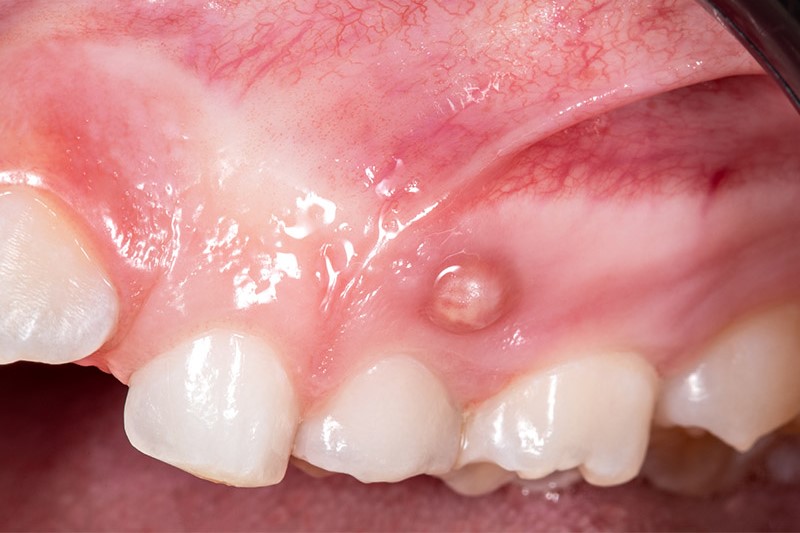
What is gingival granuloma and how to treat it
Granuloma is a chronic inflammation affecting the apex of the tooth root, often without symptoms, a sign of dental pulp degeneration
How a granuloma forms
When a tooth has deep caries and is not treated in time, it risks a more serious inflammatory process: pulpitis, an inflammation of the dental pulp.
After a period of more or less pronounced pain, the nerve contained in the pulp of the tooth undergoes necrosis: the tooth no longer hurts, but the carious lesion remains and the pulp contained in the roots fills with bacteria that proliferate and reach the tip of the root.
The consequence? The inflammation goes to the alveolus, which is the jaw bone that contains the roots of the tooth elements.
Our organism reacts to the infection by limiting it to the space near the apex of the root, where the granuloma forms, a sign of the degeneration of the dental pulp.
This is an inflammatory form that becomes chronic, often without symptoms.
Granuloma, the diagnosis
Granuloma is discovered in many cases with an X-ray that shows a dark, usually rounded area in the bone surrounding the root.
Usually the tooth does not respond to thermal stimuli because the nerve has degenerated.
Sometimes granulomas can also be found in already devitalised teeth.
How come? It is possible that after devitalisation, i.e. the cleaning of root canals and their complete filling, a bacterial load remains that supports the formation of the apical granuloma in the treated tooth.
How is a granuloma treated?
A granuloma can remain silent for years and flare up due to an increased bacterial load.
Antibiotic therapy combined with root canal treatment of the affected tooth is indicated to treat it.
If the visible part of the tooth, which is called the crown, is intact enough to be reconstructed, treatment involves the:
- disinfection of the canals;
- closure of the canals;
- reconstruction of the crown.
An apical granuloma can take on even conspicuous dimensions and can evolve into a cyst, a lesion that is always benign but often requires surgery to remove it.
Frequently, removal of the cyst is followed by removal of the involved root tip (apicoectomy).
How to Prevent
Prevention of granuloma formation is closely linked to prevention of caries: periodic check-ups, including x-rays, by experienced Dentists and Dental Hygienists are the key to never incurring granulomas.
Check-ups must be thorough and also take into account asymptomatic teeth and previous denture work, which sometimes conceal inadequate devitalisations, often a breeding ground for silent apical granulomas.
Read Also:
Emergency Live Even More…Live: Download The New Free App Of Your Newspaper For IOS And Android
Bacteremia: Causes, Diagnosis, Extension To Sepsis
Lymphogranuloma Venereum (LGV) Infection: Symptoms, Associated Diseases, Treatment
Bacterial Infections: When To Use Antibiotics?
Breast Cysts, How To Detect Them
Cystitis, Antibiotics Are Not Always Necessary: We Discover Non-Antibiotic Prophylaxis
Infection With Carbapenem-Resistant Enterobacteria


